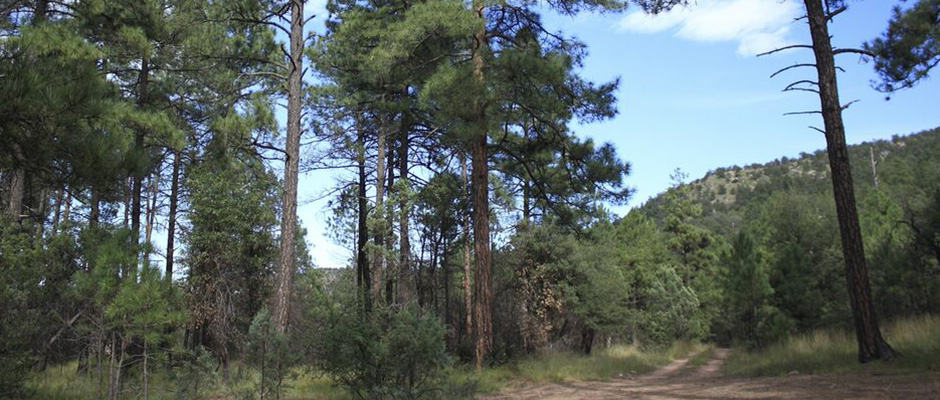Share this article
Forest Thinning Project Underway In Texas
The Nature Conservancy’s Davis Mountains Preserve in western Texas is undergoing a much needed forest thinning project, courtesy of a partnership between the Conservancy and the Texas A&M Forest Service, that will help re-stabilize vital sky island habitat in the region.
Sky islands are areas found throughout the American Southwest and northwestern Mexico where mountain ranges rise above the surrounding desert to create unique biologically, topographically and climatically diverse ecosystems.
“Because they have so much elevation they’re a lot cooler and wetter,” said Charlotte Reemts, The Nature Conservancy’s lead ecologist on the project. “And so there are species in these sky islands that are found nowhere else in the state and most of these species are isolated.”
Located in the Chihuahuan desert, the Davis Mountains are one of only three sky island ecosystems in Texas. This 33,075-acre preserve provides habitat for species such as the robust cottontail (Sylvilagus robustus), or Davis Mountains cottontail, which is now found only in the Davis Mountains. The mountains also support wide-ranging animals such as mountain lions, black bears and many migratory birds that thrive in the high-altitude forests.
Many of the plants and animals found in the preserve are “relics” from when the climate was a lot wetter, Reemts says, and have retreated to the more suitable high-elevation sky islands over the last several thousand years. As the climate continues to change and grow warmer, even more species are expected to take refuge in the islands.
However, tree mortality rates in the Davis Mountains over the last several years have been high due to severe drought, wildfires, extended cold spells and infestations of the western pine beetle (Dendroctonus brevicomis).
“These forests, like a lot of the forests out west, haven’t been burning as often as they should have,” Reemts says. “Instead of having fires once or twice per decade, they’re now basically hardly ever having fires.”
The lack of forest thinning and prescribed fire has led to overcrowding of trees. The increased tree density combined with severe drought has created competition for scarce resources such as water and, therefore, weaker, more fire-prone trees. All of these factors can result in catastrophic wildfires such as the ones the Davis Mountains experienced in 2011 and 2012 which devastated three-quarters of the preservation. It was noted, however, that areas of the forest that had utilized management techniques did a much better job withstanding the effects of the fires.
“We had been doing prescribed fire and thinning because we hoped that those would reduce wildfire intensity if a wildfire ever happened,” Reemts said, “And it turns out that they do, so it was a really nice confirmation of the management that we had been doing for the last decade or so. This thinning will make these forests more resistant to droughts, beetle outbreaks and it’ll allow us to reintroduce prescribed fires safely.”
The $500,000 project is funded by a grant from the Wildlife Conservation Society’s Climate Adaptation Fund (established by a grant from the Doris Duke Charitable Foundation), private funds raised by The Nature Conservancy, and contributions from Texas A&M. Initial thinning work began in late April and will continue for a couple years, expected to be finished in the fall of 2016.
Header Image:
Ponderosa pine forests in the Davis Mountains of Texas provide habitat for a number of species such as the robust cottontail as well as mountain lions and black bears. Researchers have launched a collaborative effort to remove dead and smaller trees from 350 acres of the mesic canyons in the Davis Mountains Preserve and subsequently revitalize this high-elevation habitat.
Image Credit: Rich Kostecke, The Nature Conservancy








